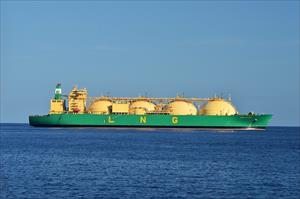Domestic gas prices in India expected to rise substantially in the next revision owing to increase in prices at gas hubs

According to leading credit rating agency, ICRA, the spot prices of liquefied natural gas (LNG) as compared to oil prices are at multi-decadal highs. The reasons attributed to it are strong regional demand, weak hydroelectric and renewable power generation and surging gas prices in European gas hubs.
There are limited prospects for softening of the market in CY2022, predicts the ‘Gas Utilities’ report released in November, 2021.
With increase in prices at various international hubs, the domestic gas prices are expected to rise substantially in the next revision. There could be a structural shortage of LNG capacity, given the net zero commitments that different governments are making and under investments by global upstream companies due to environmental, social and governance (ESG) goals. There are increased possibilities of switching from coal to gas due to environment friendly policies. The renewable and hydroelectric generation would be lesser due to low wind speeds and droughts respectively.
Odd weather patterns including a cold European spring and hot Asian summer are set to impact the LNG supply even as demand rebounds due to pick up in industrial activity. Low gas inventories in both Europe and Asia which together account for 94 percent of global LNG imports could hamper the demand. Supply disruptions at a number of facilities are both planned and unplanned.
Market controlled by a few major suppliers
As of now four countries of the world control two thirds of the global LNG supply making the market sensitive to supply disruptions. Only 8.9 million tonnes per annum (mtpa) of a total 139.1 mtpa of planned new liquefaction capacity is expected to come online in CY2021. Some additional capacity has been delayed by COVID-19 movement restrictions at several key sites including in Indonesia and Russia over the past year.
LNG container charter rates have jumped 356 MT Global LNG trade in 2020. Spot prices vis-à-vis oil prices are at multi-decadal highs, spurring shifting of demand from gas to oil increasing oil demand by around 0.5- 0.9 mbd. Strategic reserves being considered to mitigate volatility. In 2020, there was 40 percent spot LNG trade and it is expected to reduce going forward.
Logistics constraints have slowed delivery times. High EU carbon prices forced power generators to cut coal use and burn more gas. The global energy sector moving away from fossil fuels towards greener energy has slowed investment in LNG plants. The subdued investment in fossil fuels may mean volatility will remain high.
Spot demand in India to remain strong
Indian buyers generally refrain from spot LNG purchases at high prices; however, spot demand from India has been strong to cover positions for meeting fertilizer and chemical industry demand. Spot prices are unlikely to see significant downward pressure with the winter approaching.
Petronet LNG Ltd, an Indian oil and gas company formed by the government of India to import LNG has asked Qatar gas to deliver in 2022 50 cargoes that were deferred in 2015; also seeking higher volumes, better price (10.19 percent DES signed by Sinopec in September, 2020 compared to 12.7 percent FOB) for deal renewables.
Low volumes of spot at around 10 percent of total gas consumption could lead to limited impact. Relatively higher spot LNG and term LNG prices have a negative impact on city gas distribution companies. At the same time, the margins on Piped Natural Gas (PNG) could be impacted as well. In such a backdrop, the refiners will switch over to liquid fuels. While oil indexation fell from 16 percent to below 11 percent in recent years, this trend is expected to be reversed.
Increasing domestic gas production has been displacing some volumes of LNG and new terminals would be seeking long-term contracts. The domestic gas price was notified at $2.9/mmbtu (Gross Calorific Value basis) for the period H2 FY2022. At such low gas prices, gas production remains a loss-making proposition for most fields for the Indian upstream producers.
ICRA expects the domestic gas prices to rise substantially in the next revision owing to increase in prices at various international hubs.
Subscribe to our newsletter & stay updated.